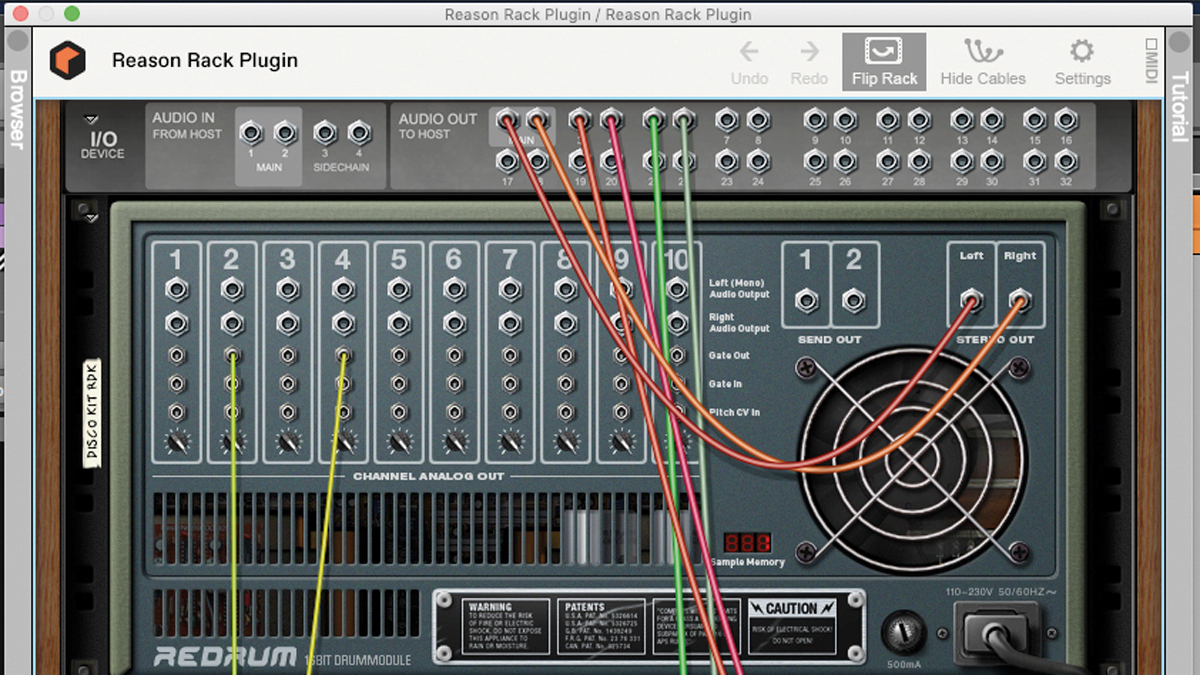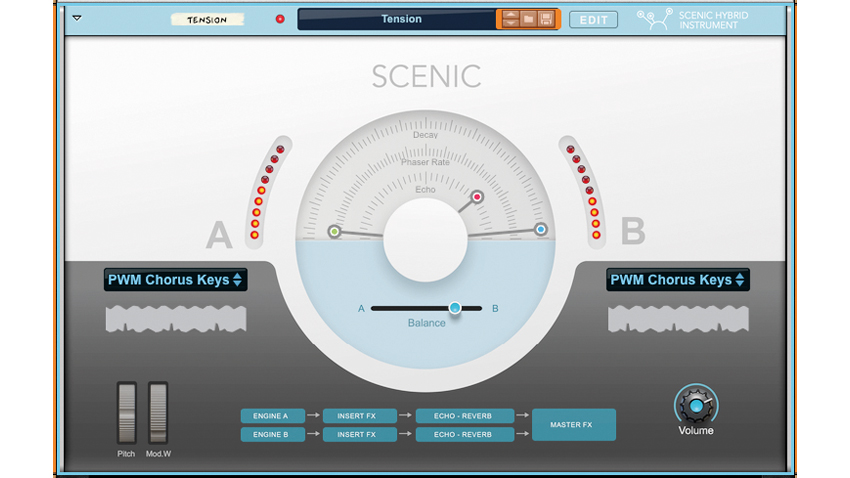MusicRadar Verdict
The stock instruments and effects really shine in plugin form. This is the most attractive Reason has looked in years…
Pros
- +
Using the Rack as a plugin is a revelation!
- +
Having the mixer channels as separate effects is great
- +
Scenic sounds good and is easy to use
Cons
- -
Rack Plugin can’t host VSTs or load Reason projects
- -
Rack Plugin is currently VST3 only
MusicRadar's got your back
There’s little denying that Reason has been on the back foot for some time now. For at least ten years, the DAW has been caught in a bind between staying true to its roots as a self-contained ‘virtual studio’ and adding new features in order to keep up with the pace of its software rivals.
On the whole, this has largely resulted in developers Propellerhead making concessions to market trends, but often trailing behind competitors; the addition of audio, introduction of third party Rack Extensions and version 10’s eventual embrace of VSTs all felt behind the curve.
There have been some big changes behind the scenes at Propellerhead, though, starting with a major investment from a private equity firm, followed by the departure of company founder Ernst Nathorst-Böös earlier this year, and now a change of name to become Reason Studios.
While we’re sure long-term users may have mixed feelings about some of these changes, it’s undoubtedly had the effect of shaking things up, and as a result version 11 feeling like a necessary refresh.
Rack to the future
There are two major changes here that immediately make Reason 11 a winner. The first of these is certainly the most significant - the introduction of the Reason Rack Plugin, which allows the DAW’s core tools to be used as a plugin within another DAW (currently only as a VST 3, but with AU following soon).
We may sound dismissive of Reason in the opening paragraph, but we’ve always had quite a soft spot for it, too. Reason still has some of the best stock instruments of any DAW, and while some of these - Thor, Redrum, Kong, Dr Octo Rex - are fairly old now, they remain fun and effective music-making tools, and newer additions like Grain and Europa hold their own against third-party VSTs.
We still really like its virtual studio design, too. For the uninitiated, Reason has long used a UI whereby instruments and effects are housed within an emulated outboard rack, complete with animated patch leads used to route audio and control signals around as you would when working with vintage hardware.
Want all the hottest music and gear news, reviews, deals, features and more, direct to your inbox? Sign up here.

As a design choice, this is always going to divide opinion - there’s no practical need for it, and if anything it’s arguably a little impractical at times, but personally we really enjoy the ‘faux studio’ workflow of patching, combining and processing sounds as if it’s being done with real hardware.
It’s this workflow that makes Reason an instant success as a plugin. The patchability and self-contained nature of the Rack transfers seamlessly to other DAWs; it works more like a modular instrument plugin.

Reason 11 Suite also adds a new Rack Extension - Scenic, a sample-powered synth with granular capabilities. It makes use of dual sample engines, five effects slots, plus filters and a number of modulation options.
Sonically, it’s designed to cover both orchestral sounds and more experimental tones, albeit all controlled via a relatively straightforward interface. It looks a touch dated, but the layout is neat.
Reason Studios describes Scenic as ‘cinematic’, which is true, particularly once multiple effects are applied. It’s part of the Suite bundle but is also available standalone priced at $99/£89.
With its combination of synth, sampling and effect tools, plus the virtual hardware feel, using the Rack within another DAW feels like a cross between the multi-engine synth designs of UVI Falcon or Kilohearts Phase Plant and the virtual modular of VCV Rack.
More than any of these things, though, using the Reason Rack as a self-contained instrument/effect reminds us of the straightforward joy of creating patterns with ReBirth - the ‘90s virtual groovebox that was a precursor to the original version of Reason.
While the sound palette and features here are far more complex than the simple drum machine/303 setup of ReBirth – and ReBirth was never available in plugin format – patching together Reason’s drum and synth tools as a way to craft patterns certainly taps into the same feeling of button-bashing creativity.
Feature-wise, the Rack Plugin benefits from flexible I/O, in the form of 16 routable, stereo outputs, an audio input and sidechain input. There’s a simple but effective browser, plus a settings menu that allows for those animated patch leads to be turned off.
The plugin can run existing Rack Extensions but can’t host VSTs itself, sadly - so any Combinator patches you’ve made in the DAW involving third-party plugins can’t be pulled across. There’s no way to transfer existing Reason projects across to the Rack Plugin, either, which is a slight shame.
Breaking out
The second smart addition to Reason 11 is the ability to use elements of the DAW’s SSL-modelled mixer as individual devices. This comes in the form of the new Master Compressor, Channel Dynamics and Channel EQ tools. Reason’s mixer channel strips have long been one of its finest features and - debate on authenticity aside - are great at punching-up drums and synths. Having them available alongside Rack instruments is a great touch, and works particularly well in plugin form.
There are also two new creative effects - Quartet Chorus Ensemble, which is an impressive, flexible chorus, and the Sweeper Modulation Effect, which is an excellent source of instant width and movement.
Reason 11 comes in three different-sized packages - Suite, Standard and Intro. All three can be used either standalone or as a DAW, the main difference being the number of devices included.
Suite is an all-you-can eat bundle, whilst Standard omits more esoteric instruments, effects and sound sources.
With just 33 devices and 2.6GB of sounds, Intro is smallest, though many core instruments and effects are included, and at £69 it’s a bargain. There are only 16 tracks available for Intro in DAW mode, but if you just want the core instruments for plugin use, this could be the way to go.
Over in the DAW, there are a number of workflow improvements, too, including curved automation, crossfades, improved zoom functionality and the ability to mute individual MIDI notes. These are all welcome, although we can’t see myself ourselves using Reason standalone now the Rack Plugin is an option - the sequencer was never our main draw to Reason, so using it within another application is a best-of-both worlds scenario.
Plenty of users will disagree with us, but that’s fine - both versions are included with all copies of Reason, so there’s no need to choose.
Whatever your preference, this feels like a step in the right direction. For the first time in years, Reason feels ahead of the curve rather than on the back foot.
Future Music is the number one magazine for today's producers. Packed with technique and technology we'll help you make great new music. All-access artist interviews, in-depth gear reviews, essential production tutorials and much more. Every marvellous monthly edition features reliable reviews of the latest and greatest hardware and software technology and techniques, unparalleled advice, in-depth interviews, sensational free samples and so much more to improve the experience and outcome of your music-making.

